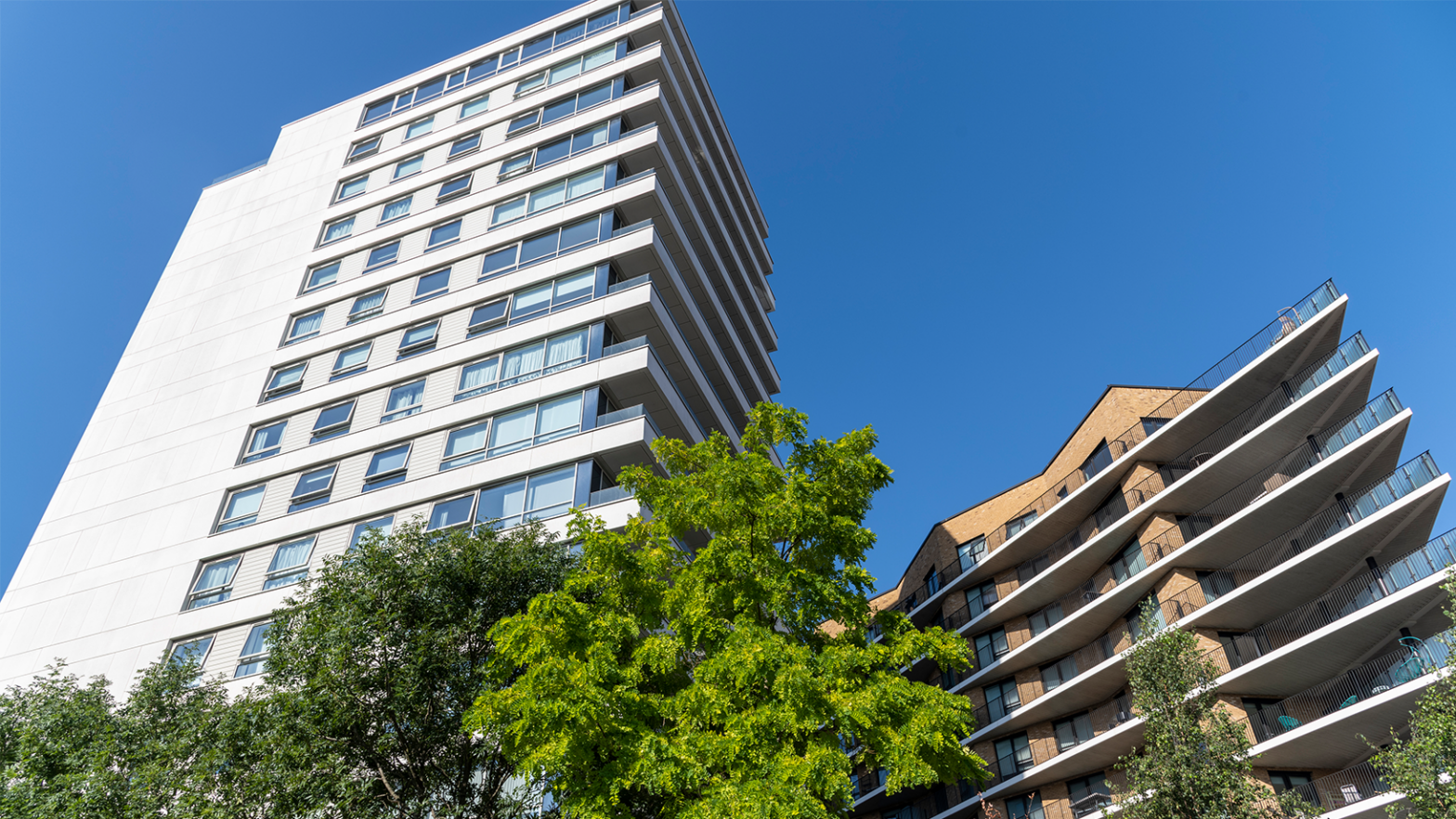
Building Safety Act 2022 (update)
Whilst the Building Safety Act (BSA) received Royal Assent on 28 April 2022, many of the more significant changes impacting upon how developers and contractors deliver construction projects have only recently taken effect. During October 2023 a wave of secondary legislation has come into effect through the implementation of a number of statutory instruments.
The implementation of this secondary legislation will influence how various “duty holders” including developers, principal designers, contractors and accountable persons perform their various respective roles going forward in order to ensure compliance with the legislation to deliver and maintain safe buildings.
This article is intended to shed light on a number of the building safety key changes which have either arisen or been clarified as a consequence of the recent legislation, what matters stakeholders need to consider, and what action they need to take in order to ensure compliance.
The key changes which will be considered are:
- the new gateway regime for higher risk building projects.
- the golden thread.
- the duty holder regime for construction professionals, and
- the recent clarification of the information retention and gathering role of Principal Accountable Persons (PAPs) and Accountable Persons (APs).
Matters for developers and contractors to consider:
The new building control regime contained in the BSA introduced a more stringent regulatory framework applicable to the design and construction of buildings generally and for Higher Risk Buildings (HRBs) in particular, presided over by the building safety regulator. This regime features “hold points” known as gateways. A developer/contractor delivering a HRB will need to achieve compliance with the regulatory requirements at these gateway hold points in order to progress the project delivery. If compliance cannot be demonstrated and “signed off” a project’s progress can grind to a halt.
The three gateways set out in the legislation are as follows:
- Gateway 1: Land use planning matters related to fire safety
- Gateway 2: Building control approval for Higher Risk Buildings, and
- Gateway 3: Completion certificates
The building control gateway regime means that approvals are now required from the building safety regulator before works start and before they are signed off as complete.
The first gateway came into effect on 1st August 2021 and is effectively undertaken at planning application stage and is therefore a developer responsibility undertaken by the developer’s design and planning team. At Gateway 2 (for HRBs) and at Gateway 3 which has now come into effect, it is important for both developer and contractor to consider who will take the contractual responsibility for achieving these building safety regulator approvals, as these responsibilities can be undertaken by either the developer or the contractor. Whoever accepts the contractual liability for achieving these gateway approvals will no doubt be expected to take the contractual time and money risk for failing to achieve the gateway approvals when and where required.
The gateway regime is particularly relevant at present because in addition to the implementation of the Gateway 2 and Gateway 3 procedure we now have clarity on the transition procedure for the period between the old building regulation regime and the new one.
The transition period started on 1 October 2023 and ends on 6 April 2024.
The Government has published a circular letter setting out the transition arrangements applicable to the building control gateways with which developers and contractors would be well advised to familiarise themselves.
In summary, the transitional provisions set out in the circular will apply to works on existing HRBs or new build HRB works:
- which have been fully detailed and notified to the local planning authority before 1st October 2023, and
- on or before the 6th April 2024:
- the works have been “sufficiently progressed” ,
- an approval inspector for the works has been registered with building control,
- where “sufficient progress” has been made the local planning authority is notified of the significant progress.
- and not before the 6th April 2024 then the old building safety regime will continue to apply. subject to full plans having been submitted to the local planning authority.
For the purposes of the legislation “sufficient progress” is where construction of the permanent foundations has started.
Where transitional provisions apply, the works will be subject to the existing building control system rather than come under the control of the new building safety regulator.
The Building Regulations Advisory Committee (BRAC) defines the golden thread as being:
“both the information that allows you to understand a building and the steps needed to keep both the building and people safe now and in the future”.
For building projects in the process of construction, the developer needs to ensure that golden thread information is stored electronically and available to designers and sub-contractors. The golden thread is therefore a “live” database which will be added to during the course of a project by key designers and sub-contractors feeding in to that database of information.
The principal contractor appointed under the building contract is required to keep a record of changes to the project so that the golden thread information accurately reflects the building that has actually been delivered rather than simply the building which was originally designed and planned.
The timely supply of golden thread information is now a key element in the construction project delivery programme as it needs to be transferred on the issue of the making good defects certificate.
The golden thread information is of key importance to the Principal Accountable Persons and Accountable Persons as they will need to have access to this information to ensure the continued safety of the newly constructed building during its occupational life.
Both developer and contractor will need to consider at tender stage who will bear responsibility for the collation of the golden thread information and the contractual time and money consequences of failing to produce the required information when required at the time of certification making good defects.
The Building Regulations etc. (Amendment) (England) Regulations 2023 finalised the need for a principal contractor to be appointed on all projects to which the Building Regulations apply.
“Duty holders are required to ensure that they are competent by which it is meant that they have the necessary skills, knowledge, experience and behaviour to carry out the design and building work they are engaged to do”.
The new role of the Duty Holder is in addition to the existing roles of principal designer and principal contractor required under the Construction (Design and Management) Regulations 2015 (CDM 2015) but the duties will likely be absorbed into the responsibilities to be performed by the contractor or consultant/architect appointed to perform these existing functions.
When the CDM 2015 regulations were introduced professional consultants such as architects had an understandable fear of the new roles and responsibilities but in practice soon came to understand that they were already effectively performing these obligations and complying with the responsibilities in any event prior to the regulations introduction. It remains to be seen whether the obligations and responsibilities of a duty holder under the Building Safety Act will be viewed in the same way, in the future.
The key difference with respect to the obligations and responsibilities under the CDM 2015 of principal contractor and principal designer and those under the BSA are that the former only requires the responsible person to take “reasonable steps” to ensure compliance whilst the latter imposes an obligation to achieve compliance.
Both developer and contractor should give early consideration to the obligations contained in the duty holder regime and ensure appropriate allocation of these responsibilities as well as providing for appropriate remedies if and when a duty holder fails to perform their obligations in accordance with the statutory requirements.
The duty holder obligations, as with the golden thread obligations, are a clear move away from procedures which may be considered as a static “tick box” exercise in achieving building safety. As with the golden thread information, a duty holder is required be alive to changes to the project and external factors including works being performed by others which has an impact upon building safety when planning, monitoring and coordinating the works when performing their overriding obligation to ensure compliance with the building regulations regime.
The Building Safety Act creates a number of new “duty holders” and we have explored the duty holder role in relation to compliance with the building regulation regime applicable to construction projects, above. In addition, the legislation provides for new building safety obligations to be performed in relation to HRBs to ensure compliance with the new building safety regime during the occupational life of the building.
The new role of “Accountable Person” (APs).
The AP will be the organisation or person who owns or has responsibility for a HRB, but it may also be an organisation or person responsible for maintaining the common parts of this type of building.
The AP has a duty to take reasonable steps to:
- Prevent a building safety risk happening, a risk being defined as “the spread of fire and/or structural failure”, and
- Reduce the seriousness of this type of incident if it were to occur.
Due to the complexity of title, maintenance and ownership issues of some HRBs, multiple Accountable Persons may have responsibility for a building and therefore the legislation has created the role of Principal Accountable Person (PAP) being the person having responsibility for the structure and exterior of a HRB.
PAPs were required to register their Higher Risk Buildings with the buildings safety regulator on or before 1 October 2023 pursuant to Section 77 of the Building Safety Act, failure to do so constituting a criminal offence.
In the last two months secondary legislation in the form of the Higher Risk Buildings (Keeping and provision of information etc.) (England) Regulations 2023 has set out the actual information which a PAP and/or an AP must retain in their role and where they are required to disseminate this information to others.
Helpfully, this new regulation also amends the existing Higher Risk Buildings (Key Building Information etc) Regulations 2023 and the Higher Risk Buildings (Descriptions and Supplementary Provisions) Regulations 2023 to provide clarity as to who is responsible for what; when complying with the duty holders responsibilities where there are these multiple Accountable Person situations.
For further information on these changes or to discuss how they may affect you please contact our construction team.
Talk to us about
Related services





 Download PDF
Download PDF










